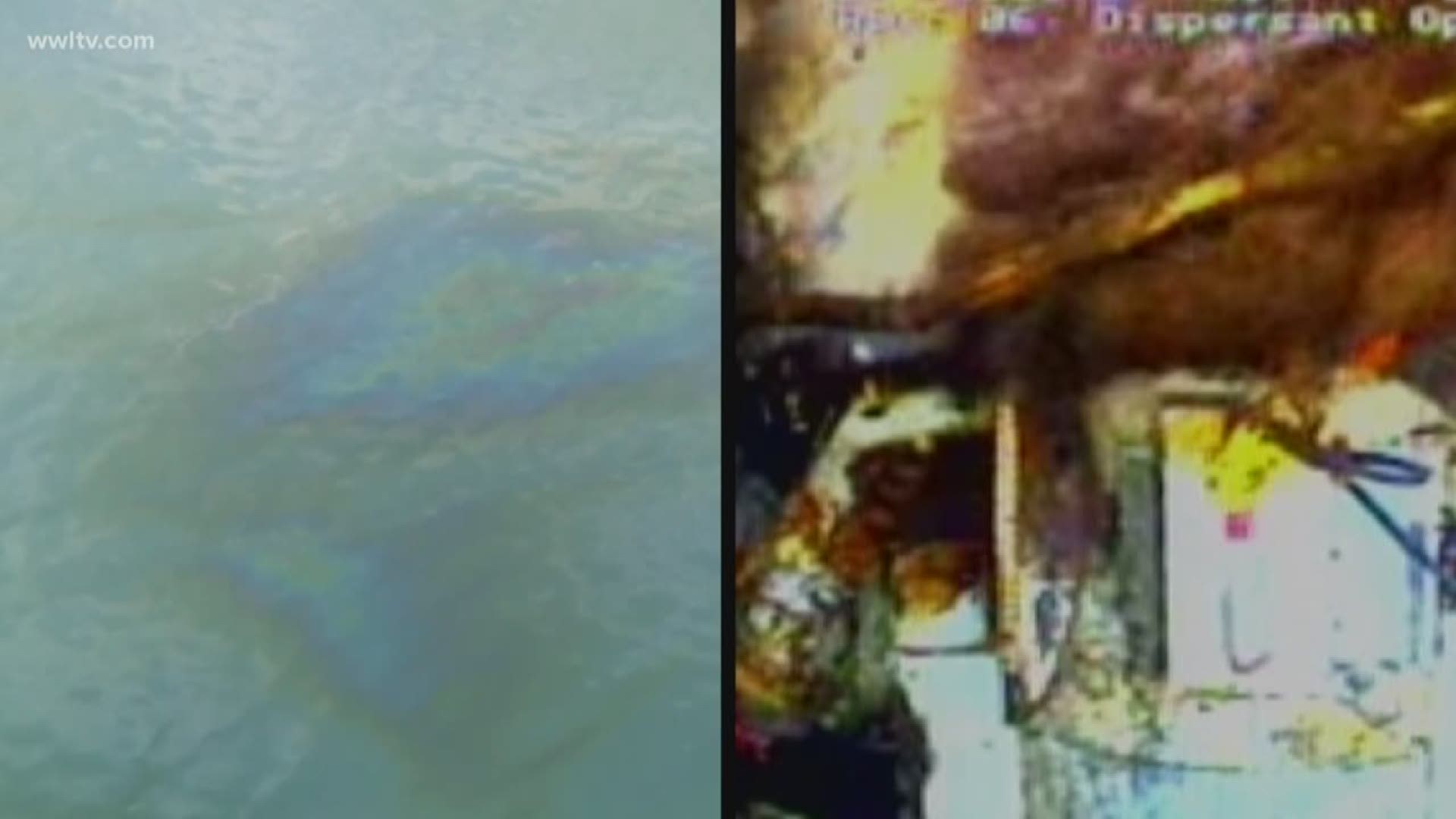A government report on the size of a 14-year-old oil leak off southeast Louisiana is triggering comparisons to the 2010 BP spill.
Comparisons that are not entirely apt.
A scientific report filed by government lawyers in federal court last month drastically revises previous estimates of the amount of oil that has been leaking from subsea wells owned by New Orleans-based Taylor Energy Co.
Those wells were damaged by Hurricane Ivan on Sept. 15, 2004, and were buried by a mudslide on the sea floor. Taylor has claimed for years that the wells were hardly leaking and it had capped what it could. The government accepted those low numbers until an Associated Press investigation in 2015 proved the leak was much larger.
The report last month by geoscientist Oscar Pineda-Garcia takes that a step further, and the government is citing it in court to prevent Taylor from walking away from its responsibilities and taking back $450 million it had placed in a trust for plugging the leaks.
"What makes me angry is it's all about the money," said Cynthia Sarthou of the Gulf Restoration Network, part of a consortium of environmental groups that has been calling for action on the Taylor spill for years. "The question we and our partners have had since the very beginning is, Why wasn't the public informed, why is nothing more being done and why are you not taking this as a serious incident?"
Pineda-Garcia, director of an oil-spill tracking company called Water Mapping LLC, used satellite imagery to estimate that anywhere from 239 to 697 barrels have been leaking from Taylor’s wells each day for the last 5,150 days.
That led the Washington Post to publish a story Sunday suggesting the Taylor Energy leak “is threatening to overtake BP’s Deepwater Horizon disaster as the largest ever.”
The WWL-TV Verify team considers that statement misleading.
First, the Pineda-Garcia report offers an extremely wide range of possibilities. Using the high-end estimate, the total amount of oil released would exceed 3.5 million barrels, which would indeed be higher than the official court estimate of 3.19 million barrels spilled by BP over 87 days after the Deepwater Horizon explosion.
But that is the only way the Taylor leak would be in the same ballpark as the BP spill. Even that high-end estimate would still be 500,000 barrels less than the government’s official finding of the BP spill volume, which was 4.09 million barrels. It would take another two years at Pineda-Garcia’s fastest spill rate for the Taylor leak to surpass the government’s estimate for BP.
The average of Pineda-Garcia’s spill-rate estimates (468 barrels per day) would yield a total of 2.4 million barrels – or more than four-and-a-half years away from the lowest BP total and a full decade from matching the government's total for the BP spill.
Another problem with a comparison to BP is the environmental impact of a slow leak over 5,150 days is totally different than BP’s 87-day gusher, which spewed at a rate of nearly 50,000 barrels per day. Even with that heavy volume and thick sludge hitting the Gulf surface for months, a government report in 2010 claimed half of BP’s oil simply evaporated. Meanwhile, on some days, the oil slick from the Taylor leak is hardly visible.
On the other hand, the Pineda-Garcia report notes that his estimate is based only on the amount of oil that’s visible in satellite photos. It’s likely larger, the report says, because oil can remain floating under the surface.
A last point to consider: The Pineda-Garcia report has not yet been accepted as the official government estimate in the court case in Washington, D.C. It is just one estimate of the Taylor leak’s size. By contrast, a dozen scientists filed reports estimating the size of the BP spill in 2011, with some putting the total as high as 6 million barrels before the government settled on 4.1 million and a federal judge accepted 3.19 million for purposes of fining BP.
Taylor Energy was founded by the late Patrick F. Taylor, best known in Louisiana for his philanthropy and popular college scholarship program. The company no longer operates any oil wells and has only one remaining employee.

